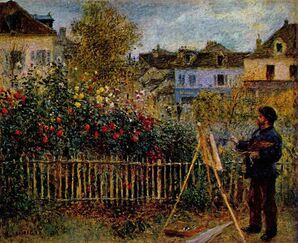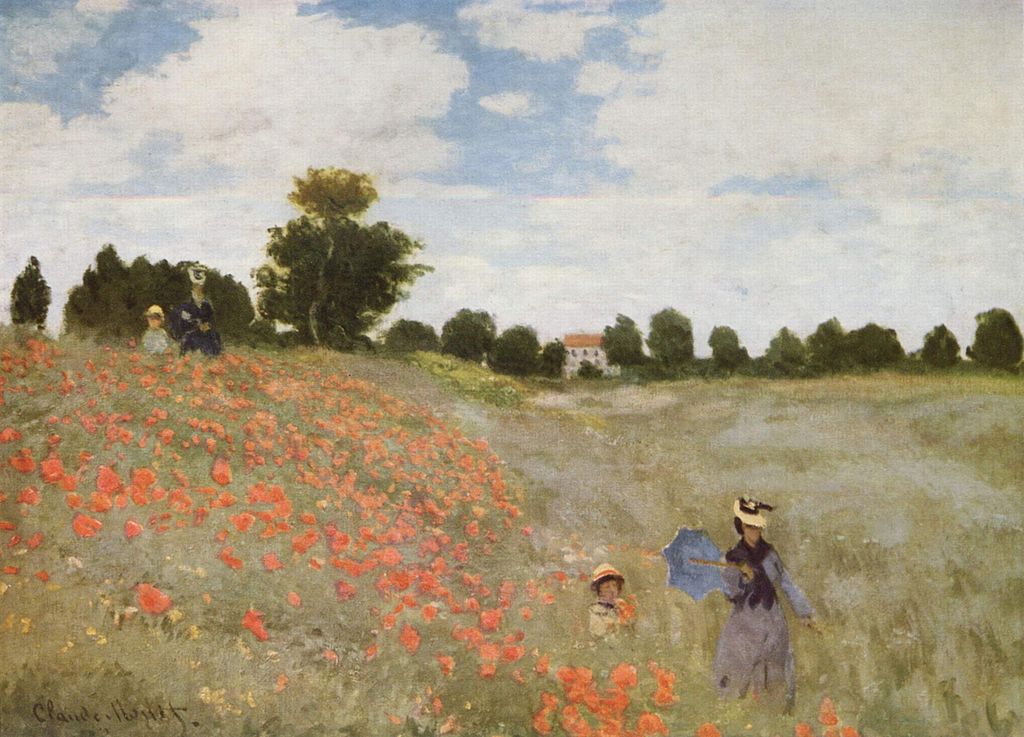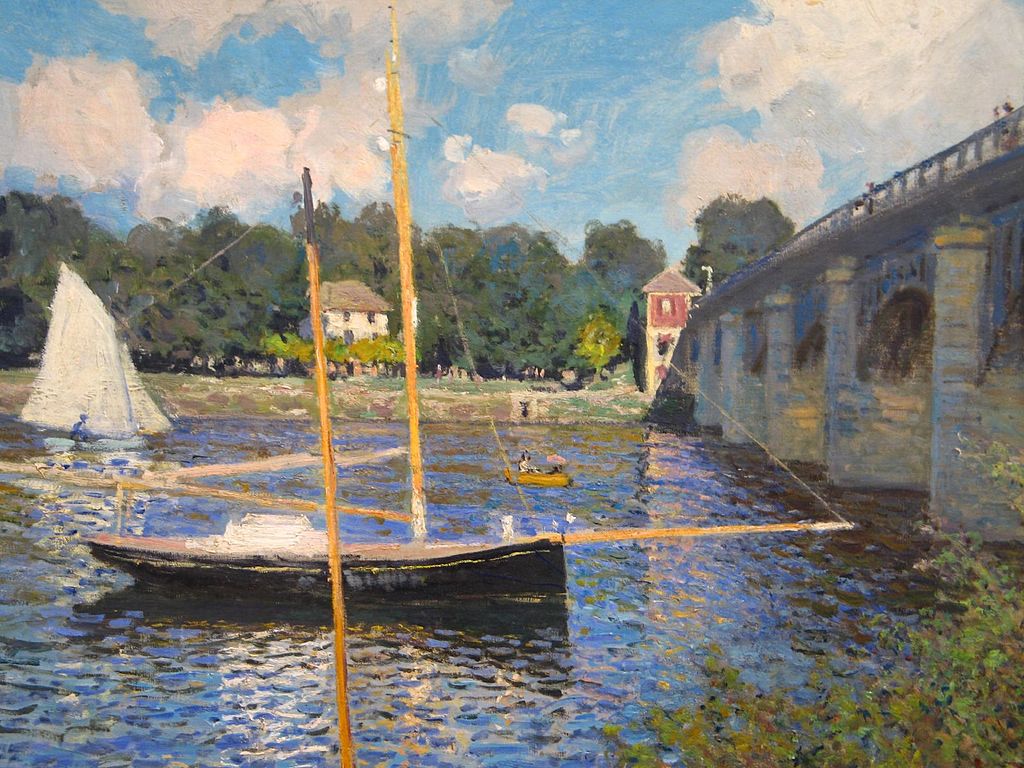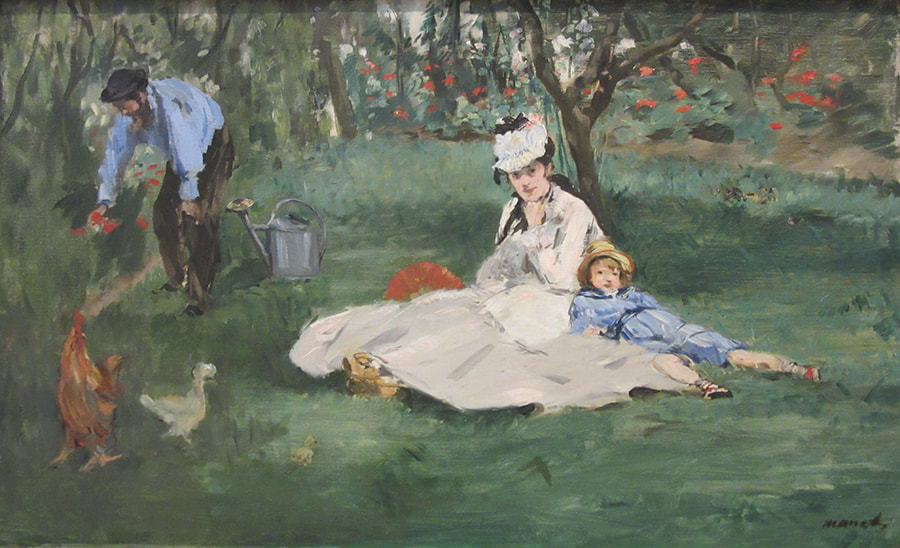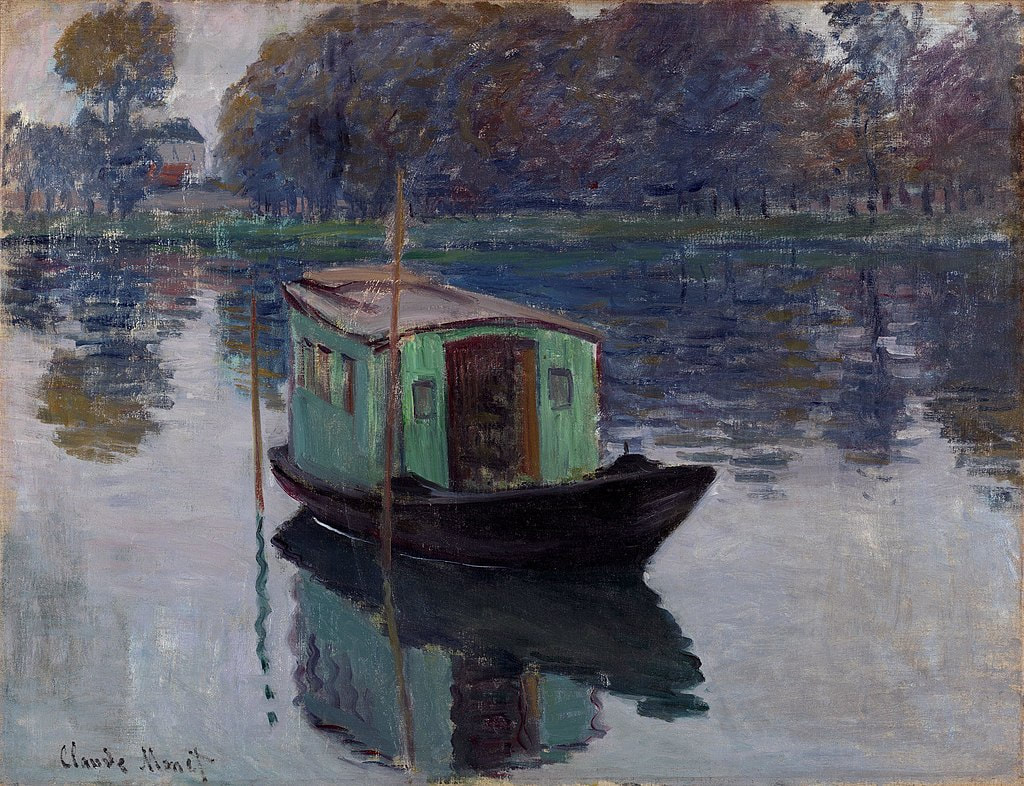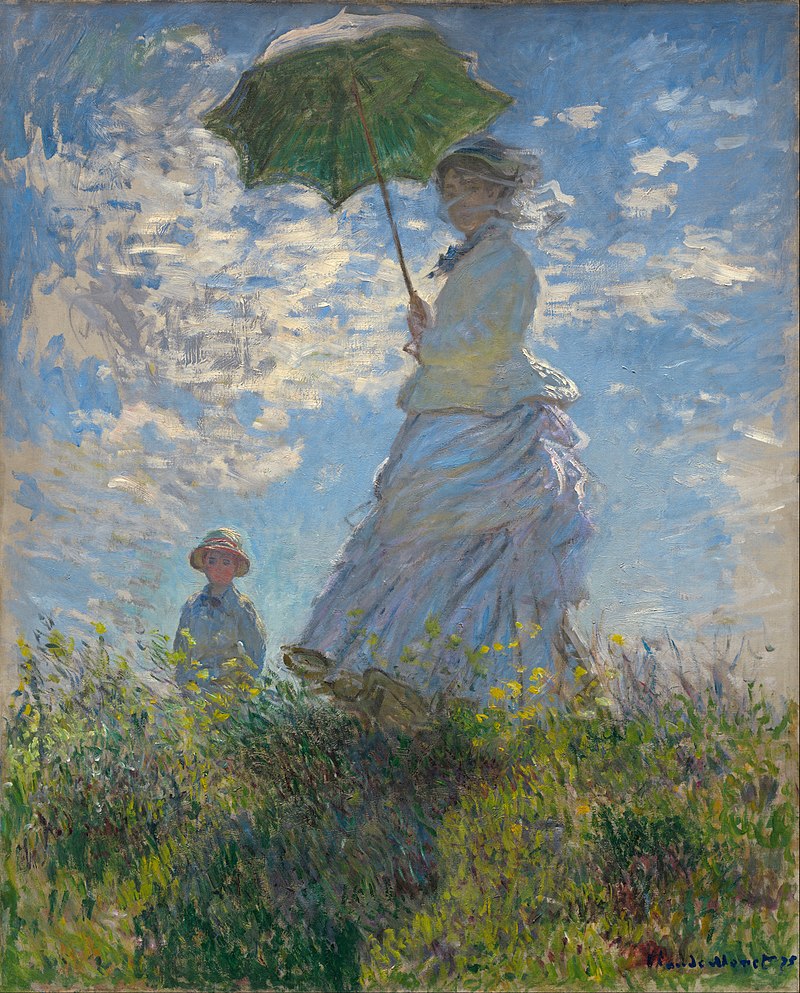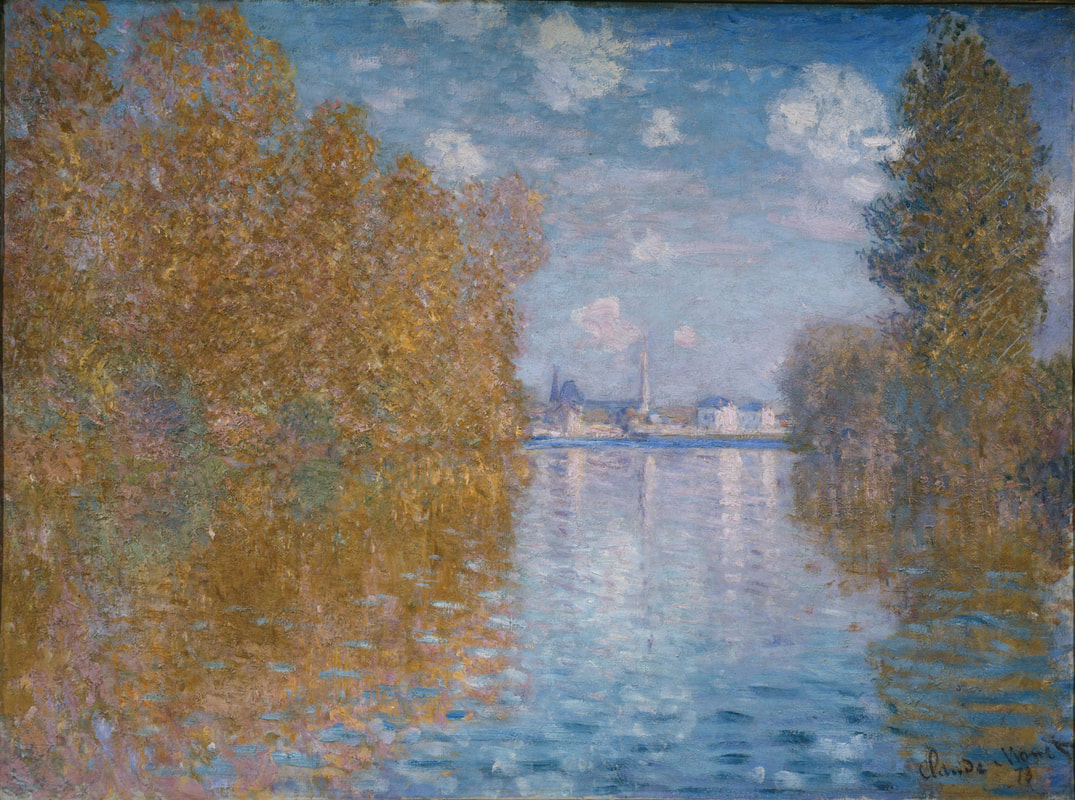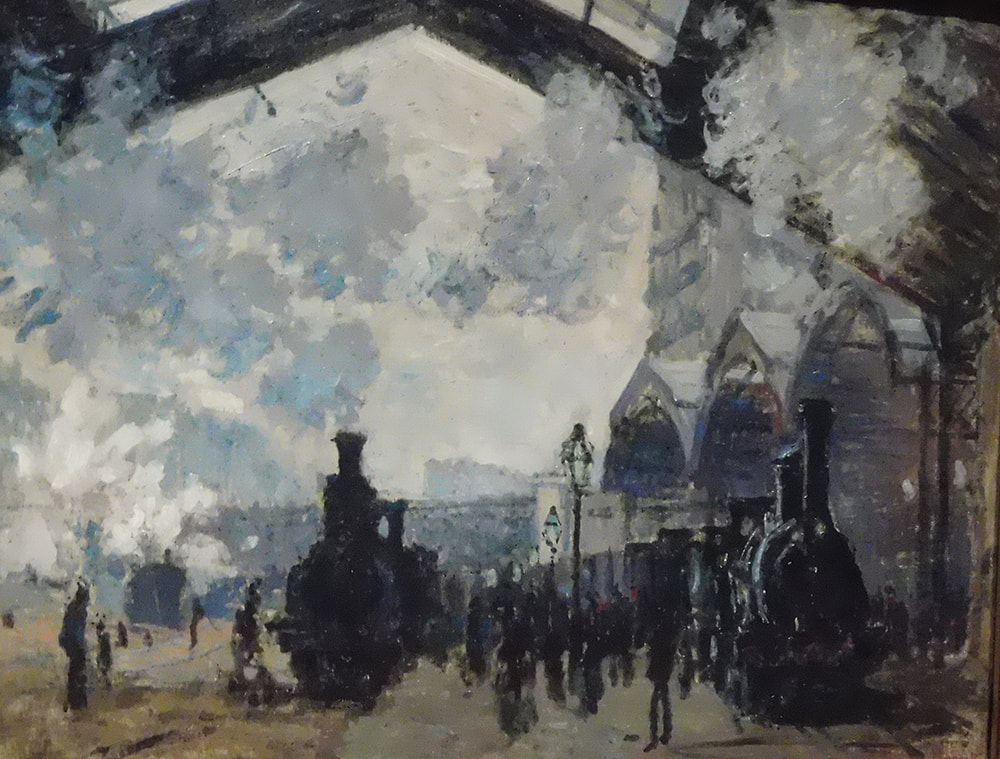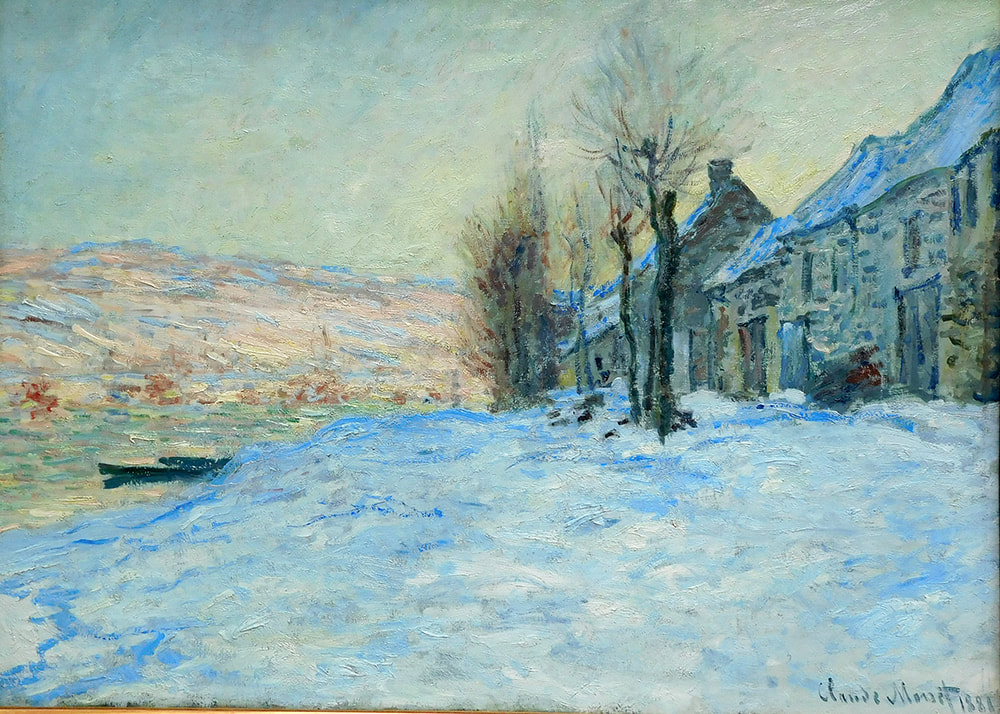AN APPRECIATION: Claude Monet
|
From his home in Argenteuil, Monet could venture out and paint bucolic scenes such as "Coquelicots, la promenade" (above) or scenes with artifacts of contemporary suburban life such at the pleasure craft in "Pont Argentueil" (below).
Monte's colleagues came to visit him at Argenteuil as evidenced by Edouard Manet's "Monet and Family in the Garden" (above).
Monet fitted out a boat as a floating studio, which he used in painting numerous views of the Seine near Argentuil (below). Two paintings masterpieces from the 1870s "Woman With A parasol" (above) and "Autumn at Argenteuil" (below).
Monet also painted urban masterpieces including a series of views of the Gare St. Zaare in Paris. (above).
Above: "Lavacurt Under Snow." Following the death of his first wife, Monet found that painting winter scenes of the area around their home at Vetheuil helped him overcome his grief.
|
Artist appreciation - Claude Monet (Part II High Impressionism)
